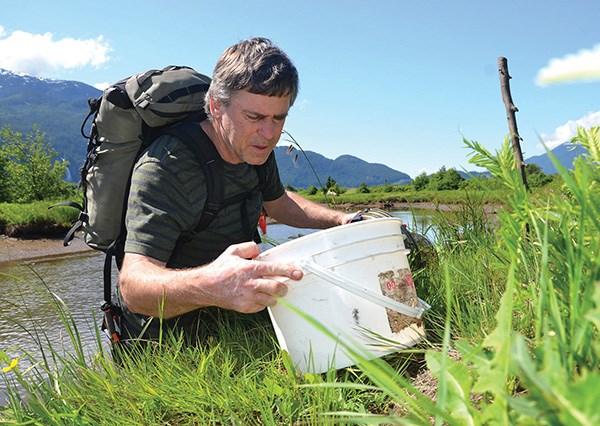District of Squamish officials are looking to plug gaps in the community’s diking system and upgrade it to meet the anticipated sea level rise.
In 1994, the District of Squamish completed its first Flood Hazard Management Plan (FHMP). The document aims to manage and mitigate the flood risk for the municipality. The new plan sets out to incorporate the latest flood management guidelines, new engineering modelling tools and techniques, and best planning practices.
The most notable gaps included in Squamish’s flood management are coastal defences, access challenges – particularly the lack of a continuous statutory right-of-way – and outstanding maintenance issues, states the district’s draft Integrated Flood Hazard Management Plan (IFHMP). The province’s new climate guidelines recommend an allowance of one metre for sea level rise by the year 2100. Coastal flood protection is currently provided by a variety of low, non-standard dikes around town, the IFHMP stated, noting conflicts with development have created challenges for future dike rising.
Municipal staff have drafted a number of options to address these concerns, municipal engineer David Roulston told The Squamish Chief. The plan divides the downtown areas into five reaches and provides options for each.
One of the most contentious alignments follows the CN railway south from the intersection of the CN mainline to the CN Rail crossing at Third Avenue. Dubbed the Seventh Avenue Connector, the dike could incorporate a roadway that would serve as a truck route to downtown’s industries. While it presents efficiencies, it also comes with its own set of challenges, Roulston said.
“Ultimately the sea dike has to take into account social considerations and the environment,” he said.
Upgrading the existing dike along the Cattermole Slough and in front of the Aqua development near Main Street, also presents difficulties, Roulston noted. Sections of the dike are sub-standard and there’s limited real estate to implement improvements, he said.
“In order to upgrade, it would require expropriation and infilling,” he said, noting there seems to be no perfect solution.
Squamish environmental activist John Buchanan said he wants to see the district drop the Seventh Avenue Connector concept and upgrade the existing dike, while constructing a bridge from Vancouver Street to Highway 99 to meet truck route needs. Even if the Seventh Avenue Connector were constructed it wouldn’t reach the log sorts on the east side of the oceanfront, he said.
“Why would we build a parallel diking system to an existing diking system,” Buchanan questioned.
The value of infrastructure vulnerable to the Squamish River alone exceeds $2.4 billion, states the district’s draft IFHM. Five rivers converge into at the head of Howe Sound. Most of the flooding in Squamish has taken place between October and December. Major floods have also taken place in August.
The IFHM will be created over two years. Open houses are set to take place in the summer of 2015 and the winter of 2015/16. Public involvement is an important element in the IFHMP as a majority of neighbourhoods are subject to various coastal and river flood hazards, district spokesperson Christina Moore stated in a press release. To find more information visit www.squamish.ca.



